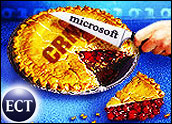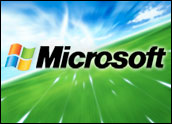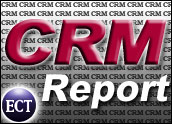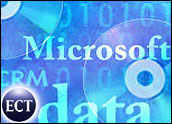
In his keynote address at Microsoft’s Convergence 2007 conference in San Diego last week, CEO Steve Ballmer included a preview of the company’s upcoming Dynamics CRM application, code-named “Titan.”
“It was the first time we demonstrated it live in front of public audience,” Brad Wilson, general manager for Microsoft Dynamics CRM, told CRM Buyer.
What’s New
The biggest change in Titan is its full multitenancy — that is, it uses the same multitenant code base for both the on-premise and Software as a Service (SaaS) deployments.
Microsoft partners that have already developed applications based on Dynamics CRM 3.0 — the current version — will find upgrading easy, according to the firm, as the same metadata-driven configuration model is also used in Titan.
Also, with Titan, Microsoft will offer an online catalog for partners to list their products and capabilities that relate to Microsoft Dynamics CRM. Earlier this year, a Technology Adopter Program (TAP) was launched, and hundreds of partners have already begun building vertical applications, on-demand service mash-ups, integration connectors and other extensions for the new release, according to Microsoft.
“As a ‘Titan’ TAP program participant, we’re already building out several workflows in the next release to automate core marketing scenarios and help our customers more effectively nurture leads,” said Peter McCormick, cofounder and vice president of partnerships at ExactTarget, a provider of on-demand e-mail software for permission-based e-mail marketing.
Titan should be available via the Live CRM service beginning in the third quarter of 2007, with on-premise and partner-hosted versions available in the fourth quarter of 2007. This release will support a total of 24 languages.
The Next Step
The industry at large — if not competitors — is eagerly awaiting the rollout of Microsoft CRM in SaaS mode for a number of reasons.
Most immediately, Microsoft CRM is currently limited and somewhat expensive for deployment in a hosted environment, John Signorello, CEO ofIceWeb, told CRM Buyer.
Titan will provide hosting providers with better architecture and scale of economy, he said. “This will enable hosted software providers to offer hosted Microsoft CRM at an affordable price, and it will easily integrate with SharePoint and Exchange services.”
Titan should solve many of the integration pain points that have been a part of early deployments, Signorello noted. For instance, the convergence of SharePoint and Exchange services will allow executive dashboard-like information from CRM to appear in SharePoint.
“In addition, information such as customer contact lists will be accessible from CRM, SharePoint and Exchange without repeating information entry,” he said. “Microsoft will also be releasing a new version of Live Communications Server in late 2007, which will enable user presence awareness, white board, file transfer, and secure/private instant messaging.”
A Compelling Combo
More intriguing are the possibilities offered by future rollouts of Microsoft products in SaaS form. Once newer versions of Dynamics are introduced in 2008, they will also include integration with CRM, SharePoint, and Exchange, Signorello pointed out, and they will better fit the hosted SaaS model, which makes it affordable for small business.
At this point, the integration of Microsoft Exchange, SharePoint, Live Communications Server, CRM and Dynamics is likely to be a very compelling combination of services.
“If individually deployed in-house for a small or medium business, each of these solutions would often be too complex or too expensive,” Signorella observed.
“However, in a hosted Software as a Service model, hosted service provider vendors can offer these solutions with little or no startup costs, along with a recurring monthly subscription price,” he said. “These hosted services would already have the integration of the Microsoft products and enable new customers to be up and running in a matter of hours instead of weeks.”
























































